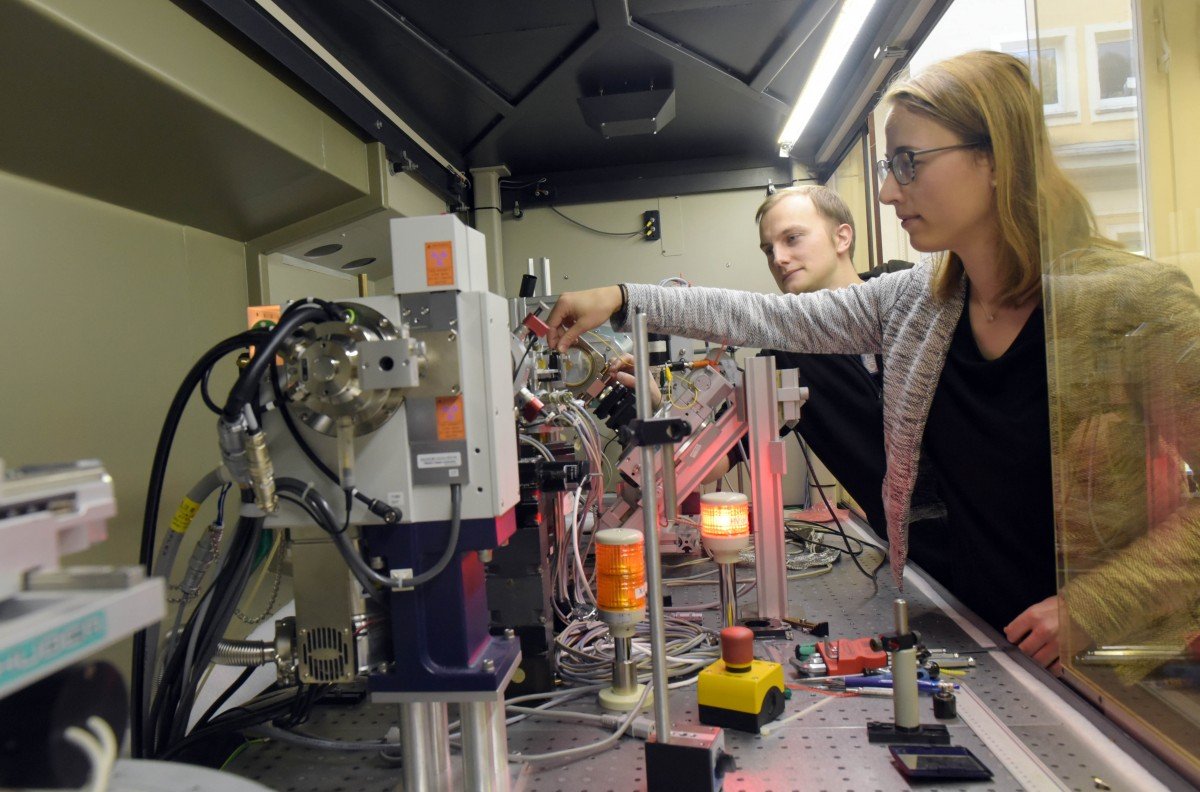
Vacuum’s empty, isn’t it? Or is it not? At least not for quantum physicists. Because they assume that even here, particles and anti-particles fluctuate. So far there is no definite proof for this assumption. But German physicists Werner Heisenberg and Hans Euler already suspected light interaction processes in the supposed nothingness. Now research groups at the University of Jena, the Helmholtz Institute Jena (HIJ), the University of Düsseldorf and the Ludwig Maximilian University Munich (LMU) have set themselves the goal of experimentally proving physical processes in the quantum vacuum for the first time.
LIGHT MAKES PHENOMENA IN “EMPTY SPACE” VISIBLE
“Strong fields make quanta shake.” This is roughly how the experts describe their research goal for non-physicists. More precisely, they want to detect quantum vacuum processes that form the ground state of nature using high-intensity lasers. “The special thing about our team is the close interaction between fundamental theory and high experimental art,” explains Dr. Felix Karbstein, theorist at the HIJ. Karbstein is working on the precise prediction of the quantities in which the particles and their antiparticles, which are extremely short in vacuum, leave their traces.

The experimental physicists from Jena and their colleagues at the LMU are currently researching a methodology to provide practical proof. To this end, they are developing and combining powerful lasers with new, precise measurement methods. This way, the volatile processes can be measured in a vacuum. Until now, there were no light sources that were powerful enough for experimental testing. The modern high-intensity lasers used in the experiments now are getting closer to the required laser power. Therefore, the experiments will not only be carried out in Jena and Munich, but also at the European X-ray laser at DESY in Hamburg.
Modern physics regards the phenomena of the quantum vacuum, which Gies and his team want to prove, as fundamental and exotic at the same time. These include, for example, the multiphotonic generation of particle pairs from the vacuum as well as phenomena of scattering of light, such as the so-called quantum reflection. However, not only the Jena research group is on the trail of these elusive events. “We are in an international competition,” says Prof. Dr. Holger Gies, quantum theorist and head of the research group. The physicist hopes – since he is convinced of the abilities of his experimental colleagues – that the research group will be the first to be able to prove this due to the particular closeness of theory and practice.
USING THE PROPERTIES OF VACUUM AS BUILDING BLOCKS
The detection and understanding of vacuum phenomena are of importance not only for quantum physics itself. In the future, the results could help with the development of devices that use the properties of the vacuum as building blocks. For example, modern high-performance lasers and precise measurement methods are now indispensable in medicine, life sciences and materials research. “In researching the quantum vacuum, we fundamental researchers come comparatively close to a concrete application,” says Gies. On the other hand, there is even the possibility of finding hints to candidates for the mysterious Dark Matter. This, in turn, is responsible for the formation of structures in the universe. But it could also leave traces in the quantum vacuum. But for now it is important to realize the hoped for results. So, to prove that there are physical processes even in the lowest energy state.
The research project called “Probing the Quantum Vacuum at the High-intensity Frontier” is scheduled to last six years. The first, three-year phase will be funded by the German Research Foundation with around two million euros and a total of nine doctoral positions.








